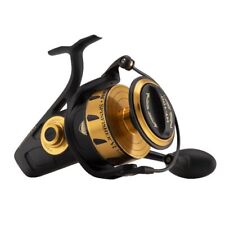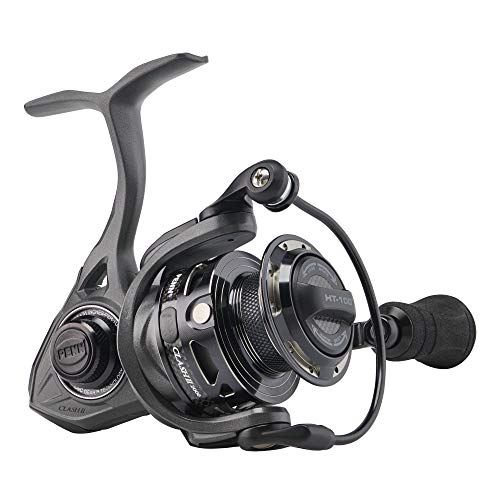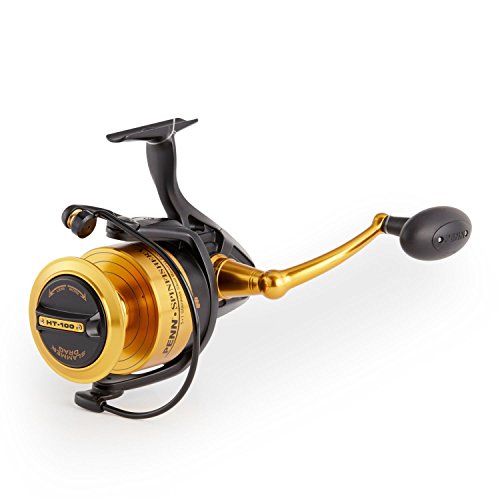Part 1: Introduction and Understanding Roosterfish
Introduction
Have you ever dreamed of battling a fierce, acrobatic fish in the crystal-clear waters of the Pacific Ocean? Look no further than the roosterfish, a prized game fish that attracts anglers from around the world to the shores of Costa Rica. Known for their distinctive appearance and powerful fights, roosterfish have become synonymous with the ultimate fishing adventure.
Did you know that roosterfish are actually part of the jack family and can grow up to 4 feet long? In fact, the world record roosterfish, caught off the coast of Baja California, weighed an impressive 114 pounds! These incredible fish are not only sought after for their size but also for their tenacity and fighting spirit.
In this comprehensive guide, we'll dive into the world of roosterfish fishing in Costa Rica, sharing expert tips, top locations, and the thrill of the catch. Whether you're a seasoned angler or a curious beginner, this article will provide you with the knowledge and inspiration to embark on your own roosterfish adventure in the tropical paradise of Costa Rica.
Key Takeaways
- Roosterfish are known for their unique appearance, with their distinctive comb-like dorsal fin and striking coloration
- Costa Rica offers ideal conditions for roosterfish, with abundant populations and year-round opportunities
- Understanding roosterfish behavior, habitat preferences, and feeding patterns is crucial for success
- Employing the right fishing techniques, such as trolling, casting, and fly fishing, can greatly increase your chances of landing a roosterfish
- Hiring a knowledgeable local guide can enhance your experience and provide valuable insights into the best fishing spots and tactics
- Catch and release practices are essential for preserving roosterfish populations and ensuring the sustainability of the fishery
- Costa Rica offers a range of accommodations and fishing packages to suit every angler's needs and preferences
Understanding Roosterfish
Roosterfish (Nematistius pectoralis) are a striking species, easily recognizable by their elongated dorsal fins that resemble a rooster's comb. These magnificent fish can grow up to 4 feet in length and weigh over 100 pounds, making them a formidable opponent for any angler. Roosterfish have a distinctive silvery-blue body with dark stripes, adding to their visual appeal.
Typically found in the eastern Pacific Ocean, from Baja California to Peru, roosterfish inhabit coastal waters and estuaries. They prefer rocky structures, reefs, and sandy bottoms, where they can hunt for their favorite prey, including sardines, anchovies, and other small fish.
Interestingly, roosterfish are known to form hunting packs, working together to corral baitfish before attacking. This unique behavior adds to the excitement of targeting these fish, as anglers may encounter multiple roosterfish simultaneously.
Roosterfish are powerful swimmers and fierce fighters, making them a thrilling catch for anglers. When hooked, they are known for their long, fast runs and aerial acrobatics, often leaping out of the water multiple times during a fight. This combination of strength and agility has earned them a reputation as one of the most exciting game fish in the world.
Some interesting facts about roosterfish include:
- Roosterfish are diurnal, meaning they are most active during the day
- They have excellent eyesight, which they use to locate and pursue prey
- Roosterfish are not considered good table fare due to their tough, dark meat
- The species is closely related to amberjacks and trevallies
- Roosterfish have a lifespan of up to 15 years in the wild
By understanding the unique characteristics and behaviors of roosterfish, anglers can better prepare themselves for the challenge and excitement of targeting these incredible fish in Costa Rica's waters.
Part 2: Costa Rica's Roosterfish Fishery and Techniques

Why Costa Rica is a Top Destination for Roosterfish Fishing
Costa Rica, with its pristine coastline and abundant marine life, has emerged as a premier destination for roosterfish fishing. The country's Pacific coast, stretching from the Gulf of Papagayo to the Osa Peninsula, offers ideal conditions for targeting these incredible fish.
One of the key advantages of fishing in Costa Rica is its year-round warm water temperatures, which attract roosterfish and other game fish species. The best times for roosterfish fishing are typically from May to November, with peak months being June through August.
Some of the top fishing spots for roosterfish in Costa Rica include:
| Location | Highlights |
|---|---|
| Golfo Dulce | Sheltered waters, great for fly fishing |
| Quepos | Consistently high roosterfish populations |
| Los Sueños | Excellent infrastructure and fishing charters |
| Guanacaste | Calm seas and abundant baitfish |
| Drake Bay | Remote location with pristine waters |
| Golfito | Access to the productive Golfo Dulce |
These locations offer not only excellent roosterfish fishing but also stunning scenery and a chance to immerse yourself in the beauty of Costa Rica's coastal environments. Many of these areas are also home to other sought-after game fish species, such as:
- Sailfish
- Marlin
- Dorado (Mahi-mahi)
- Tuna
- Wahoo
This diversity of species makes Costa Rica an attractive destination for anglers seeking a varied and exciting fishing experience.
In addition to its rich waters, Costa Rica also boasts a well-developed sport fishing industry, with numerous experienced guides, top-notch fishing lodges, and modern charter boats. This infrastructure ensures that anglers have access to the best resources and support for a successful and enjoyable roosterfish fishing trip.
Furthermore, Costa Rica's commitment to conservation and sustainable fishing practices has helped maintain healthy roosterfish populations. The country has implemented catch and release regulations, size limits, and seasonal closures to protect the species and ensure the long-term viability of the fishery.
Fishing Techniques for Roosterfish
To successfully target roosterfish in Costa Rica, anglers should familiarize themselves with the most effective fishing techniques and gear. Roosterfish can be caught using various methods, including trolling, casting, and fly fishing.
Trolling
Trolling is a popular and effective method for targeting roosterfish, particularly for covering large areas of water and locating fish. When trolling for roosterfish, using live bait such as blue runners, goggle eyes, or mullet can be incredibly effective. Rigging the bait with a circle hook helps ensure a proper hookset and reduces the risk of deep hooking, which is crucial for successful catch and release.
Some tips for trolling:
- Use heavy tackle (30-50 lb test) to handle the powerful fights of roosterfish
- Troll at speeds between 3-5 knots to mimic the natural movement of baitfish
- Vary your trolling depths to find the most active fish
- Be prepared for sudden strikes and aggressive runs when a roosterfish takes the bait
Casting
For anglers who prefer a more active and engaging approach, casting can be an exciting way to target roosterfish. Surface poppers, stickbaits, and metal jigs are popular lures for casting to roosterfish. Look for schools of baitfish, birds diving, or surface commotion, as these are often indicators of roosterfish feeding nearby.
When casting, consider the following:
- Use medium to heavy spinning gear with 20-30 lb line for casting accuracy and control
- Cast beyond the feeding activity and retrieve the lure through the strike zone
- Vary your retrieval speed and lure action to entice strikes
- Be ready for explosive surface strikes and powerful runs when a roosterfish attacks the lure
Fly Fishing
Fly fishing for roosterfish has gained popularity in recent years, offering a more challenging and intimate experience. Saltwater-specific fly rods in the 10-12 weight range paired with heavy leaders and wire tippets are essential for handling these powerful fish.
Effective fly patterns for roosterfish include:
- Poppers in colors like blue, green, and pink
- Deceivers and baitfish patterns in white, chartreuse, and gray
- Crab and shrimp patterns in tan and olive
When fly fishing for roosterfish, keep these tips in mind:
- Practice your casting accuracy and distance to reach feeding fish
- Use a fast-sinking line or sinking tip to get the fly down to the strike zone quickly
- Strip the fly with short, erratic movements to mimic a fleeing baitfish
- Set the hook with a strip strike when you feel the take, then clear the line and fight the fish on the reel
Regardless of your chosen fishing method, always prioritize proper fish handling and catch and release practices to minimize stress on the fish and ensure their survival.
Part 3: Guided Trips, Conservation, and Conclusion

Catch and Release Practices
As responsible anglers, it's crucial to practice catch and release when fishing for roosterfish in Costa Rica. This helps ensure the sustainability of fish populations and preserves the sport for future generations.
When releasing a roosterfish, handle the fish carefully and minimize its time out of the water. Use wet hands or rubberized gloves to avoid removing the fish's protective slime coat. If possible, keep the fish in the water while removing the hook, using pliers or dehooking devices for a quick release.
If a photograph is desired, support the fish horizontally and keep it close to the water to minimize stress. Avoid lifting the fish vertically by its jaw, as this can cause injury.
Costa Rica has implemented various conservation measures to protect its marine resources, including:
- Catch limits and size restrictions for certain species
- Seasonal closures to protect spawning fish
- Marine protected areas to preserve critical habitats
- Licensing requirements for sport fishing operators
- Education programs to promote responsible fishing practices
By adhering to these regulations and practicing responsible fishing, anglers can play a vital role in preserving Costa Rica's incredible roosterfish fishery for generations to come.
Some organizations actively involved in marine conservation and research in Costa Rica include:
- FECOP (Federación Costarricense de Pesca)
- The Billfish Foundation
- MarViva
- PRETOMA (Programa Restauración de Tortugas Marinas)
Supporting these organizations and participating in their initiatives can help further the cause of conservation and sustainable fishing practices in Costa Rica.
Guided Roosterfish Fishing Trips in Costa Rica
For anglers new to roosterfish fishing or unfamiliar with Costa Rica's waters, hiring a local guide or charter can greatly enhance the experience. Guided trips offer numerous benefits, including:
- Expert knowledge of the best fishing spots and techniques
- High-quality gear and well-maintained boats
- Insight into local weather patterns and fish behavior
- Access to exclusive fishing areas
- Assistance with fish handling and catch and release practices
Many fishing lodges and resorts in Costa Rica offer all-inclusive packages that include accommodations, meals, and guided fishing trips. Some popular options include:
| Lodge/Resort | Location | Highlights |
|---|---|---|
| Crocodile Bay Resort (now Botankia Resort) | Puerto Jimenez | Eco-friendly resort, experienced guides |
| Los Sueños Resort and Marina | Herradura | Luxury accommodations, top-notch boats |
| Zancudo Lodge | Golfito | Remote location, personalized service |
| Silver King Lodge | Boca Chica | Boutique lodge, fly fishing expertise |
When booking a guided roosterfish fishing trip, be sure to research the reputation and experience of the guide or charter company. Look for reviews from previous clients and ask about their success rates, conservation practices, and safety measures.
During a guided trip, expect to spend a full day on the water, with early morning departures to take advantage of peak roosterfish activity. Your guide will provide all necessary gear and instruction, as well as drinks and snacks throughout the day.
Some additional considerations when planning your guided roosterfish fishing trip:
- Inquire about group sizes and the guide-to-angler ratio to ensure personalized attention
- Ask about the type and condition of the fishing equipment provided
- Discuss your skill level and expectations with the guide beforehand to tailor the experience to your needs
- Consider combining your fishing trip with other activities like eco-tours, wildlife viewing, or beach excursions for a well-rounded Costa Rican adventure
By choosing a reputable guide or charter service and communicating your preferences, you can ensure an unforgettable and successful roosterfish fishing experience in Costa Rica.
Conclusion
Roosterfish fishing in Costa Rica offers anglers an unparalleled opportunity to test their skills against one of the most thrilling game fish in the world. With its pristine waters, abundant fish populations, and experienced guides, Costa Rica has rightfully earned its reputation as a top destination for roosterfish enthusiasts.
By understanding roosterfish behavior, employing effective techniques, and practicing responsible catch and release, anglers can enjoy the excitement of the fight while preserving this incredible species for future generations. Whether you're a seasoned pro or a first-time visitor, roosterfish fishing in Costa Rica promises an unforgettable adventure in a tropical paradise.
As you plan your roosterfish fishing trip, remember to:
- Choose experienced guides and reputable charter services
- Practice catch and release to support conservation efforts
- Respect local regulations and sustainable fishing practices
- Embrace the beauty and biodiversity of Costa Rica's coastal environments
Armed with the knowledge and tips from this guide, you're now ready to embark on your own roosterfish adventure in Costa Rica. Tight lines and happy fishing!





